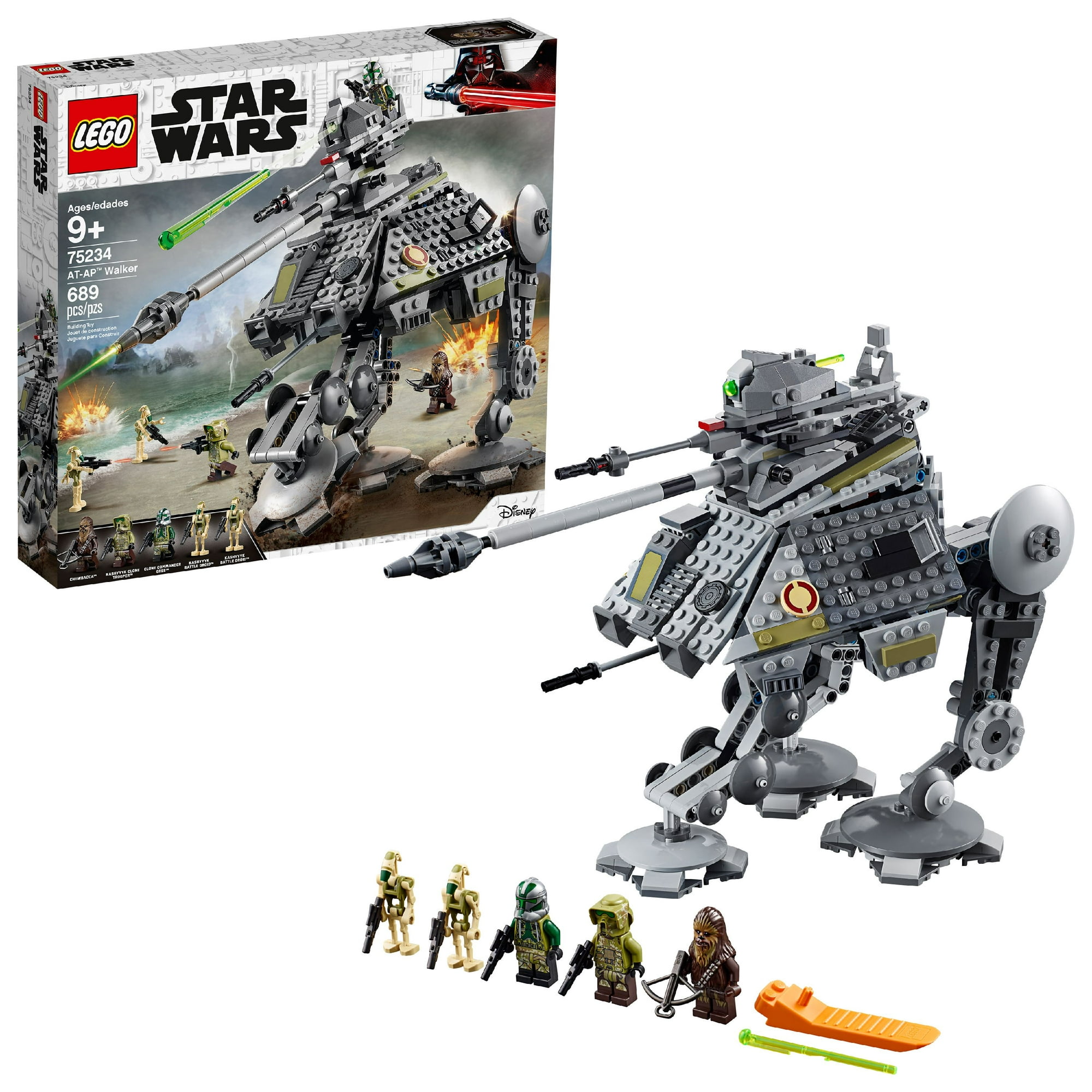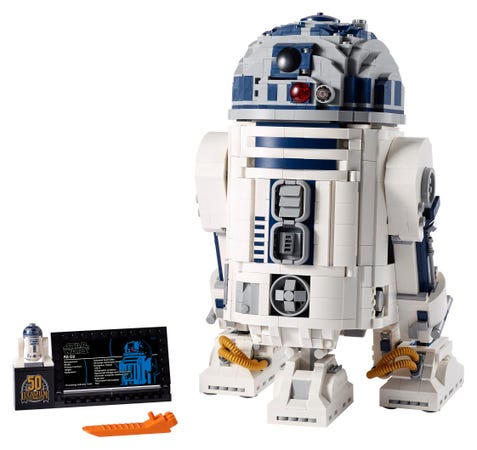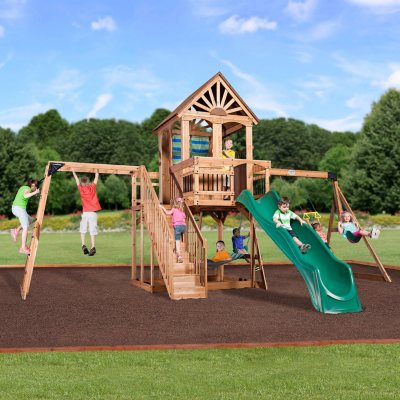LEGO Star Wars AT-AP Walker Building Toy 75234
This Star Wars toy includes 3 LEGO Star Wars minifigures: Chewbacca, Clone Commander Gree and a Kashyyyk Clone Trooper, plus 2 Kashyyyk Battle Droid LEGO figures.
Add some heavy firepower to any LEGO fan?s collection with the tough LEGO Star Wars 75234 AT-AP Walker. This impressive Star Wars toy features articulated legs and a retractable third leg, plus an opening top and sides that reveal a detailed 2-minifigure cockpit. This walking tank model also includes a rotating and elevating top turret with a seat for a minifigure and a spring-loaded shooter for exciting Star Wars battling action. With Chewbacca, Clone Commander Gree and Kashyyyk Clone Trooper figures plus 2 Kashyyyk Battle Droid LEGO figures, this Star Wars collectible construction toy makes for a great Christmas gift for kids.
- This Star Wars toy includes 3 LEGO Star Wars minifigures: Chewbacca, Clone Commander Gree and a Kashyyyk Clone Trooper, plus 2 Kashyyyk Battle Droid LEGO figures
- This AT-AP Walker Star Wars toy features articulated legs and retractable third leg, a detailed 2-minifigure cockpit accessible from the top and side hatches, a locking, rotating and elevating upper turret with a seat for a minifigure and spring-loaded shooter
- Combat weapons include Chewbacca’s bowcaster and 4 blasters
- Battle Droid Star Wars LEGO figures feature head decoration and torso color
- Recreate action-filled Star Wars: Revenge of the Sith style Kashyyyk battles!
- Go up against the 75233 Star Wars Droid Gunship for even more Kashyyyk action!
- This Imperial walker Star Wars toy measures over 9? (24cm) high, 11? (29cm) long and 5? (15cm) wide
Additional information
| Age Range | 9 |
|---|---|
| Assembled Product Weight | 2.1 lbs |
| Assembled Product Dimensions (L x W x H) | 14.88 x 13.94 x 2.78 Inches |






by Nina
we are a big star wars Lego family and my 16 year old loves this set!
by Jacob
This set is really cool and it’s a pretty decent size. My only problem with it is that it’s not meant for play. The third leg is the only one that can move in a reasonable extent. The two main legs can only move back if they where set in there normal position. Besides that it’s a cool little display piece and it looks awesome on my shelf.
by Cindy
My son son was looking everywhere for this LEGO set, as always, Walmart had it!!!!! At the price that we expected, and arrived on time. I love Walmart. I find everything there and have the best prices.
by Stuart
I don’t have any complaints about this set. It’s worth the price considering the sizeable build and figures. The set has so many functions, my favorite of which is the front leg that can actually fold back and stay held in place. I do think it would have been nice for LEGO to include an extra clone trooper, but the figure selection is already great and I’m just hoping for any opportunity to find clones!
by Fabian
Good concept but the finished product is not stable for playing.
by Harry
I don’t have much to say about this set other than the fact that in this version of the AT-AP, you get Commander Gree and two of the new Kashyyyk battle droids. It moves just the same way as the 2014 version but it was worth the price overall.